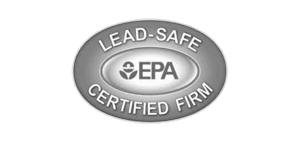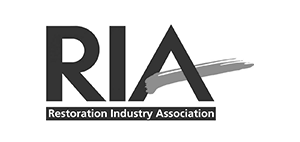Ever thought if a home can recover from major water damage? Or if the damage is permanent? When water hits a house, acting fast is key to stop more harm and keep it standing strong. Fixing water damage means several important steps, like finding the cause, drying out the area, and getting rid of mold. But can your home really go back to how it was before?
Key Takeaways
- Acting quickly is crucial to stop more damage and keep the house stable.
- Finding where the water came from is the first step to fixing your home.
- Drying your home fast is key to stopping mold from growing.
- Checking the home after fixing ensures it’s safe and livable.
Identifying the Source of Water Damage
First, it’s important to find where the water damage is coming from. This could be a broken appliance, a leaky pipe, or a sewer backup. Knowing the source helps decide what steps to take next. For instance, fixing a leaky pipe is simpler than dealing with a sewer backup, which needs experts because of the risk of contamination.
Spotting leaks is key to stopping more damage. Homeowners should look at appliances like water heaters, dishwashers, and washing machines. Also, checking the roof and foundation for cracks can reveal hidden spots where water might get in.
A detailed check-up can show how much damage there is. Experts should be called in to see where the water is coming from and how it’s affecting the property. Once the source is found, it’s crucial to stop the water flow. This might mean turning off the water supply or getting help for big issues like foundation cracks.
Knowing where the water is coming from is important for safety. If it’s dirty water, like from a sewer backup, you’ll need to clean up carefully and might need special gear. So, figuring out the water source and getting expert advice can make fixing things easier.
Types of Water Damage
It’s crucial for homeowners to know about the different types of water damage. Water damage is split into three main categories: clean water, grey water, and black water. Each type has its own level of severity and requires specific actions.
Class I, or clean water, comes from things like burst pipes or overflowing sinks. It’s the least risky and doesn’t have harmful substances. Fixing it quickly can stop more damage and mold from happening.
Class II, or grey water, includes water from appliances and washing machines. It might have soap or dirt in it, making it a bit risky. Handling it carefully is important to protect health and property.
Class III, or black water, is the worst kind. It’s from sewer backups, flooding, or standing water full of harmful stuff. Black water is very dangerous and needs quick, expert cleanup.
Knowing the difference helps homeowners act fast and fix water damage right.
Steps for Tackling Water Damage
Dealing with water damage means acting fast and being organized. First, stop the water from coming in. If you can, turn off the electricity to avoid dangers. Then, follow these steps:
- Contact the homeowner’s insurance company: Tell your insurer right away and document the damage well. This is key for any claims.
- Commence water mitigation: Remove as much water as you can. Use mops, buckets, and wet-dry vacuums to dry the area quickly.
- Initiate the drying process: Use dehumidifiers, fans, and sump pumps to dry things out faster. Open windows and doors for better airflow.
- Engage in flood restoration: If the damage is big, consider hiring water restoration experts. They have the skills and tools for a complete cleanup, including handling biohazards.
Quick action in an emergency can really change the outcome. Drying out the area well is key to stop mold and other problems. These steps help save your property and make it safe again.
The Importance of Drying Out Your Home
Quickly drying your home after water damage is key to preventing mold growth. Mold can start to grow in just 24 hours. Using tools like wet-vacs, dehumidifiers, and fans helps remove moisture and lower humidity. Experts often handle this to dry everything fully, including hidden spots like subflooring and walls.
The time it takes to dry your home depends on the damage and what’s affected. It usually takes from two days to weeks. It’s crucial to remove moisture well with dehumidifiers to avoid long-term damage and keep your home healthy.
Preventing Mold Growth
After water damage, it’s key to stop mold from growing. Mold can start to grow in just one day if there’s moisture. Homeowners should check for mold in carpets, walls, and other wet areas.
If you find mold, call a mold remediation company. They know how to find and remove mold.
Mold makes health issues worse, like breathing problems and allergies. It also harms the structure of your home. Getting professionals to fix it makes your home safe again.
When to Call Professionals
Knowing when to call professionals for water damage is key to keeping your home safe. If the damage is big or getting worse fast, you should get professional help. These experts have the right tools, knowledge, and safety steps to fix big cleaning, drying, and repair jobs.
For black water, which might have harmful stuff in it, you need pros. Black water can be dangerous to your health, so it must be handled carefully. Also, if you see or smell mold, you should get experts to clean it up. They make sure your home is safe and clean.
Here are some times when you really need professional help:
- Big water floods that hit many rooms or floors.
- Black water from sewage or dangerous stuff.
- Seeing mold or a strong musty smell means there’s mold hidden away.
- Water damage keeps happening and you’re not sure why.
Getting a pro to check out the water damage can also save you time. They can find problems you might not see and stop more damage. With an expert’s help, you can fix the water damage right and avoid more problems.
Can Water Damage Be Fixed in a House?
Yes, most water damage in a house can be fixed with quick and correct actions. The repair process starts with removing the water, then drying out the affected areas. Next, repairs are done to fix any damage and stop future problems.
Experts in water damage restoration are great at finding all the affected parts. They make sure to fix both the parts you can see and the ones you can’t. Sometimes, they also need to remove mold to keep everyone healthy. Fixing the damage and taking steps to prevent future issues is key.
To prevent water damage, it’s good to improve your home’s drainage and check your appliances and plumbing often. It’s also smart to know what your insurance covers for water damage before you start fixing things. Understanding your options for fixing water damage helps make sure the repairs are complete and work well.
Conclusion
Dealing with water damage is key to keeping a house safe and healthy. Homeowners need to act fast to find and fix the water issue. This quick action helps make a plan to dry, clean, and repair the damage. Getting help from experts is often vital for a complete fix, stopping mold and future problems.
Knowing the different types of water damage is crucial. Spotting when you need professional help can save a lot of time and money. Doing the right repairs not only fixes the current issue but also keeps the house safe and valuable. Being smart and quick in fixing problems helps protect your biggest investment—your home.
To wrap it up, fixing water damage needs both good planning and expert advice. By taking the right steps and focusing on full repairs, homeowners can keep their property safe. This approach makes living safer and helps keep the home’s value strong.



















